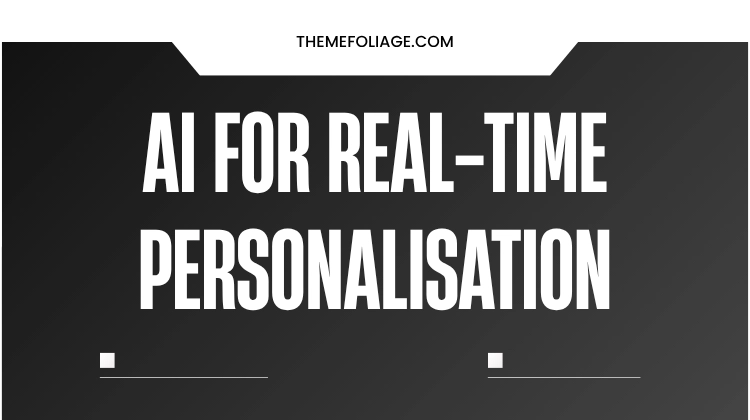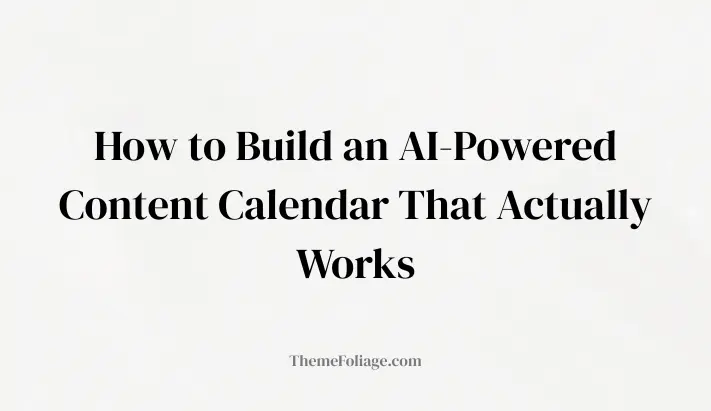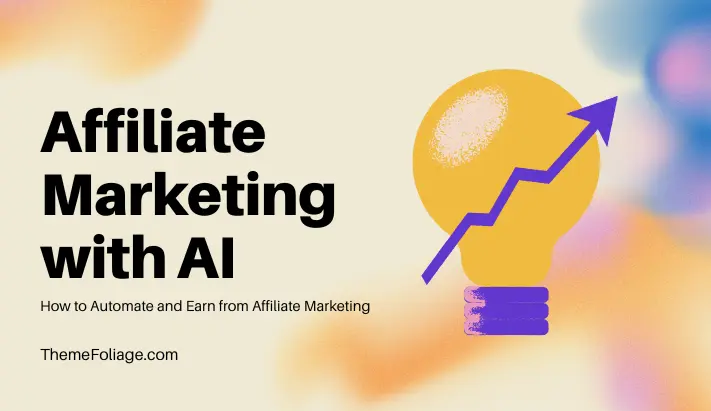Real-time personalisation is the difference between a message that interrupts and one that connects. In 2025, AI elevates personalisation from static segmentation to dynamic, moment-by-moment adaptation, tailoring content, offers and journeys for each user based on live signals.
This shift moves marketing from “batch and blast” to “micro-moments” that increase engagement, conversion and lifetime value.
This guide explains how real-time personalisation works, practical use cases, recommended tools (note: prices may change), an implementation roadmap and governance considerations so you can deliver personalised moments at scale.
Why Real-Time Personalisation Matters Now
- Attention windows are tiny; timely relevance wins.
- First-party data and privacy shifts make owned-channel personalisation strategic.
- AI enables fast, automated decisions that human teams cannot match at scale.
- Personalisation improves metrics across the funnel: higher CTRs, higher conversion rates and stronger retention.
Real-time personalisation isn’t just showing “recommended products.” It’s detecting intent at the moment, search queries, session behaviour, cart activity, device and contextual signals, and responding with the best content or action.
Core Components of Real-Time Personalisation
- Unified Customer Profile (UCV/CDP)
A live profile that stitches events from web, mobile, email, CRM and offline touchpoints into a single identity. - Event Stream and Feature Store
Real-time event ingestion (clicks, scrolls, video watches) and a feature store that surfaces up-to-date signals for models. - Prediction & Decision Layer
Lightweight ML models and decisioning logic that compute intent scores, next-best-action and personalised creative in milliseconds. - Experience Layer
Onsite personalisation engines, dynamic ad creative, email builders and in-app messaging that apply decisions instantly. - Orchestration & Governance
Rules for consent, frequency capping, and fallbacks, so automation remains compliant and brand-safe.
Practical Use Cases That Move the Needle
Dynamic Homepage Personalisation: Replace a generic hero with a product or article tailored to current session intent (recent search, referral source, or product views).
Adaptive Onsite CTAs: Swap CTAs to trial, demo, or discount based on predicted conversion propensity.
Real-Time Cart Recovery: Detect hesitancy (long checkout dwell time, coupon searches) and trigger a contextual nudge or coupon via in-site message or push.
Contextual Email Blasts: Send transactional or behavioural emails tailored to the exact action a user took minutes earlier (e.g., “Still interested in X?” with live pricing).
Programmatic Creative Optimisation: Use dynamic creative optimisation (DCO) to assemble ad variants that reflect live inventory, location and user intent.
In-App Micro-Personalisation: Surface feature tips or upgrade prompts the moment a user demonstrates readiness (e.g., repeated use of advanced features).
Real-Time Pricing & Offers: Personalised discounts or bundles presented only when predictive value calculators deem it profitable.
Recommended Tools and Patterns (prices may change)
| Tool Category | Examples |
|---|---|
| CDP / UCV | Segment, RudderStack, Treasure Data |
| Real-time Decisioning | Dynamic Yield, Optimizely, Bloomreach |
| Feature Stores / Prediction | Feast, Tecton, Pecan AI |
| DCO and Creative | AdGreetz, CitrusAd, Google Studio |
| Messaging & Orchestration | Braze, Braze/OneSignal, Iterable |
| Analytics & Experimentation | Amplitude, Mixpanel, VWO |
Note: verify current pricing and feature fit before purchasing; vendor tiers and capabilities evolve rapidly.
Implementation Roadmap (practical, phased)
- Define High-Impact Use Cases
Pick one or two micro-moments (homepage, checkout, welcome flow) with measurable KPIs. - Build a Unified Data Layer
Instrument events, map identity resolution and centralise data into a CDP or data warehouse. - Create Fast Signals
Identify 5–10 real-time features: session recency, pages viewed, cart value, referral source, device, last open time. - Train Lightweight Predictive Models
Use simple, fast models for propensity scoring (e.g., logistic regression, small tree ensembles). Prioritise latency over complexity. - Integrate Decisioning with Experience Layer
Connect prediction endpoints to personalisation engines and creative templates, so decisions are applied instantly. - A/B Test with Holdout Groups
Run controlled experiments and measure incremental lift, do not rely solely on lift in exposed group. - Add Orchestration & Protection
Implement frequency caps, consent checks and brand filters. Ensure fallbacks when signals are missing. - Scale Gradually
Expand to additional channels, add more signals, and evolve models to be multichannel and multimodal.
Measurement: What to Track
- Incremental conversion lift (experiment-based)
- CTR and engagement per personalised element
- Revenue per visitor and average order value (AOV) by cohort
- Customer lifetime value (CLV) changes over time
- Model latency and prediction accuracy
- Consent and opt-out rates
Always prefer causal measurement (A/B or holdout) to attribution that confuses correlation with causation.
Governance, Privacy and Ethics
- Respect consent: check consent state in real time before personalising.
- Data minimisation: only keep features needed for short-term decisioning.
- Explainability: log decision reasons where customer-facing actions have material impact (price, eligibility).
- Bias monitoring: review model outcomes across demographics and segments for unfair skew.
- Audit trails: maintain event logs for decisions, exposures and fallbacks.
Common Pitfalls and How to Avoid Them
- Over-personalisation that feels creepy: prefer helpfulness to surveillance.
- Ignoring latency requirements: heavy models can slow pages; use edge or cached predictions.
- Fragmented identities: ensure robust identity stitching to avoid inconsistent experiences.
- Optimising for short-term clicks: include downstream metrics (retention, returns) in objective functions.
- No fallback: always render a high-quality default when signals fail.
Final Thoughts
AI for real-time personalisation is a competitive multiplier in 2025. When done well, it creates seamless, relevant experiences that respect privacy and build loyalty.
Start with one high-impact micro-moment, instrument the right signals, choose lightweight models for speed, and measure with holdouts. Scale only after you prove incremental value.
Personalisation is not about guessing who someone is, it’s about responding to what they’re doing right now with value and respect. Do that consistently, and you’ll turn fleeting attention into lasting customer relationships.



